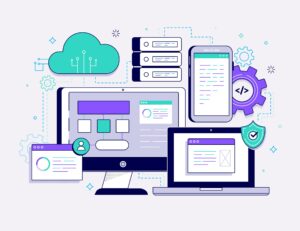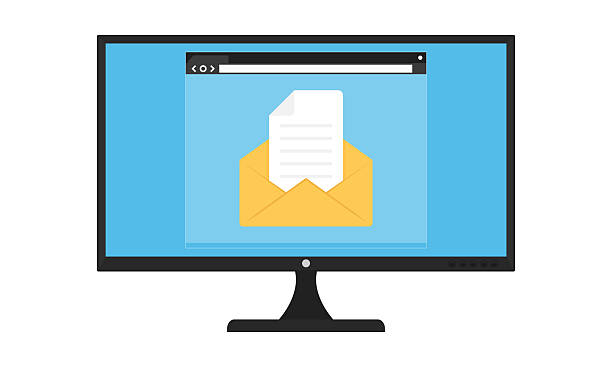Software forms the invisible foundation of our digital world, enabling everything from simple calculator apps to complex artificial intelligence systems. Unlike physical hardware that we can touch and see, software exists as lines of code that bring machines to life. In today’s technology-driven society, understanding software has become as essential as knowing how to operate everyday appliances.
This guide will take you through the fascinating world of software, explaining what it is, how it’s created, and why it sometimes doesn’t work as intended. We’ll explore the different categories of software, the careful process developers follow to create it, and practical tips for getting the most out of the software you use every day. Whether you’re a curious beginner or someone looking to deepen their technical knowledge, this comprehensive overview will give you valuable insights into the digital tools that power our modern lives.
In this comprehensive guide, we will explore:
-
The definition and importance of software
-
Different types of software
-
The software development lifecycle
-
Common challenges and bugs in software
-
Best practices for software usage and troubleshooting
What is Software?
At its core, software is a set of instructions that tell a computer what to do. Imagine giving a very detailed recipe to a robot chef – the software works similarly, providing step-by-step directions that hardware components follow to complete tasks. These instructions are written in special programming languages that computers can understand, then translated into the binary code (ones and zeros) that forms the basic language of computing.
What makes software particularly remarkable is its flexibility and adaptability. Developers can modify and improve software without needing to change physical components. This means your smartphone can gain new capabilities through software updates long after you’ve purchased it. Software also scales remarkably well – the same basic program might work on devices with different hardware capabilities, adjusting its performance accordingly. However, this flexibility comes with some limitations, as certain software is designed to work only with specific operating systems or hardware configurations.
Key Characteristics of Software
-
Intangible – Cannot be touched, but interacts with hardware.
-
Easily Modifiable – Can be updated or patched without replacing physical components.
-
Scalable – Can be expanded to handle more complex tasks.
-
Platform-Dependent – Some software only works on specific operating systems.
Types of Software
The world of software can be divided into three main categories, each serving distinct purposes in how we interact with technology. System software forms the fundamental layer that makes all other software possible. This includes operating systems like Windows, macOS, and Linux that manage your computer’s basic functions, as well as device drivers that help hardware components communicate with the system. Utility programs also fall into this category, performing essential maintenance tasks like virus scanning or disk optimization that keep your system running smoothly.
Application software represents the programs most people interact with daily. These are the tools that help us work, create, and entertain ourselves – from productivity suites like Microsoft Office to creative tools like Photoshop, and from web browsers to video games. Unlike system software that works mostly in the background, application software is designed with direct user interaction in mind, featuring interfaces that allow us to accomplish specific tasks without needing to understand the complex workings beneath the surface.
Programming software serves as the toolkit for software creators. These specialized programs include development environments where programmers write and test their code, compilers that translate human-readable code into machine language, and debugging tools that help identify and fix errors in software. This category also encompasses version control systems that help teams collaborate on large software projects, ensuring that changes can be tracked and coordinated effectively. For those interested in understanding how software issues are identified and resolved, our BG3 Bug Report Guide provides valuable insights into the process of reporting and troubleshooting software problems.
Software can be broadly classified into three main categories:
1. System Software
System software manages hardware and provides a platform for running application software. Examples include:
-
Operating Systems (OS) – Windows, macOS, Linux
-
Device Drivers – Enable communication between hardware and OS
-
Utilities – Disk cleanup, antivirus, and system optimization tools
2. Application Software
Application software is designed for end-users to perform specific tasks. Examples include:
-
Productivity Software – Microsoft Office, Google Docs
-
Entertainment Software – Video games, media players
-
Business Software – CRM systems, accounting software
3. Programming Software
These tools help developers write, test, and debug code. Examples include:
-
Integrated Development Environments (IDEs) – Visual Studio, PyCharm
-
Compilers & Interpreters – Convert code into executable programs
-
Debugging Tools – Help identify and fix errors in code
For more insights on software troubleshooting, check out our BG3 Bug Report Guide.

The Software Development Lifecycle (SDLC)
Creating reliable, functional software follows a structured process known as the Software Development Lifecycle. This systematic approach begins with careful planning and requirement analysis, where developers work to understand exactly what the software needs to accomplish and who will be using it. This crucial stage involves gathering detailed specifications about both the functional aspects (what the software should do) and non-functional requirements (how well it should perform those functions).
The design phase translates these requirements into a blueprint for the software. Architects create the overall system structure, designers plan the user interface and experience, and database specialists determine how information will be stored and accessed. This planning helps prevent costly changes later in development. Once the design is finalized, the actual coding begins in the development phase, where programmers write the instructions that will become the working software, using version control systems to manage changes and collaboration.
Before reaching users, software undergoes rigorous testing to identify and fix bugs. Different testing methods check individual components (unit testing), their interactions (integration testing), and the complete system (system testing). After passing these quality checks, the software moves to deployment, where it’s released to users and its performance is closely monitored. The lifecycle doesn’t end at launch – the maintenance phase involves addressing user-reported issues, releasing security patches, and adding new features to keep the software useful and secure over time. For those looking to explore various software tools and solutions, GetFullTech’s Software Section offers a comprehensive resource for discovering and evaluating different software options.
Creating software involves a structured process known as the Software Development Lifecycle (SDLC). The key phases include:
1. Planning & Requirement Analysis
-
Define project goals
-
Identify the target audience
-
Gather functional and non-functional requirements
2. Design
-
Create system architecture
-
Design UI/UX
-
Plan the database structure
3. Development
-
Write code based on design specifications
-
Use version control systems (e.g., Git)
4. Testing
-
Perform unit, integration, and system testing
-
Identify and fix bugs
5. Deployment
-
Release the software to users
-
Monitor performance
6. Maintenance & Updates
-
Fix bugs reported by users
-
Release patches and feature updates
For a deeper dive into software tools and resources, visit GetFullTech’s Software Section.
Common Software Challenges & Bugs
Despite rigorous testing, software often encounters issues such as:
1. Compatibility Issues
-
Software may not work on certain devices or OS versions.
2. Performance Bottlenecks
-
Slow load times due to inefficient code.
3. Security Vulnerabilities
-
Bugs that hackers exploit (e.g., buffer overflows, SQL injection).
4. Unexpected Crashes
-
Software may freeze or shut down unexpectedly.
To learn how to report and fix bugs effectively, refer to our BG3 Bug Report Guide.
Best Practices for Software Usage
1. Keep Software Updated
-
Install the latest patches to fix vulnerabilities.
2. Use Antivirus & Firewall Protection
-
Prevent malware infections.
3. Backup Data Regularly
-
Avoid data loss due to software failures.
4. Read Documentation & User Guides
-
Understand software features before use.
For more software recommendations and reviews, explore GetFullTech.
Conclusion
Software is an ever-evolving field that drives innovation across industries. Understanding its types, development process, and best practices can help users and developers maximize efficiency while minimizing errors. Whether you’re a casual user or a professional developer, staying informed about software trends is crucial in today’s digital age.
For further reading on bug reporting and troubleshooting, check out our BG3 Bug Report Guide.
To explore a wide range of software solutions, visit GetFullTech’s Software Hub.



